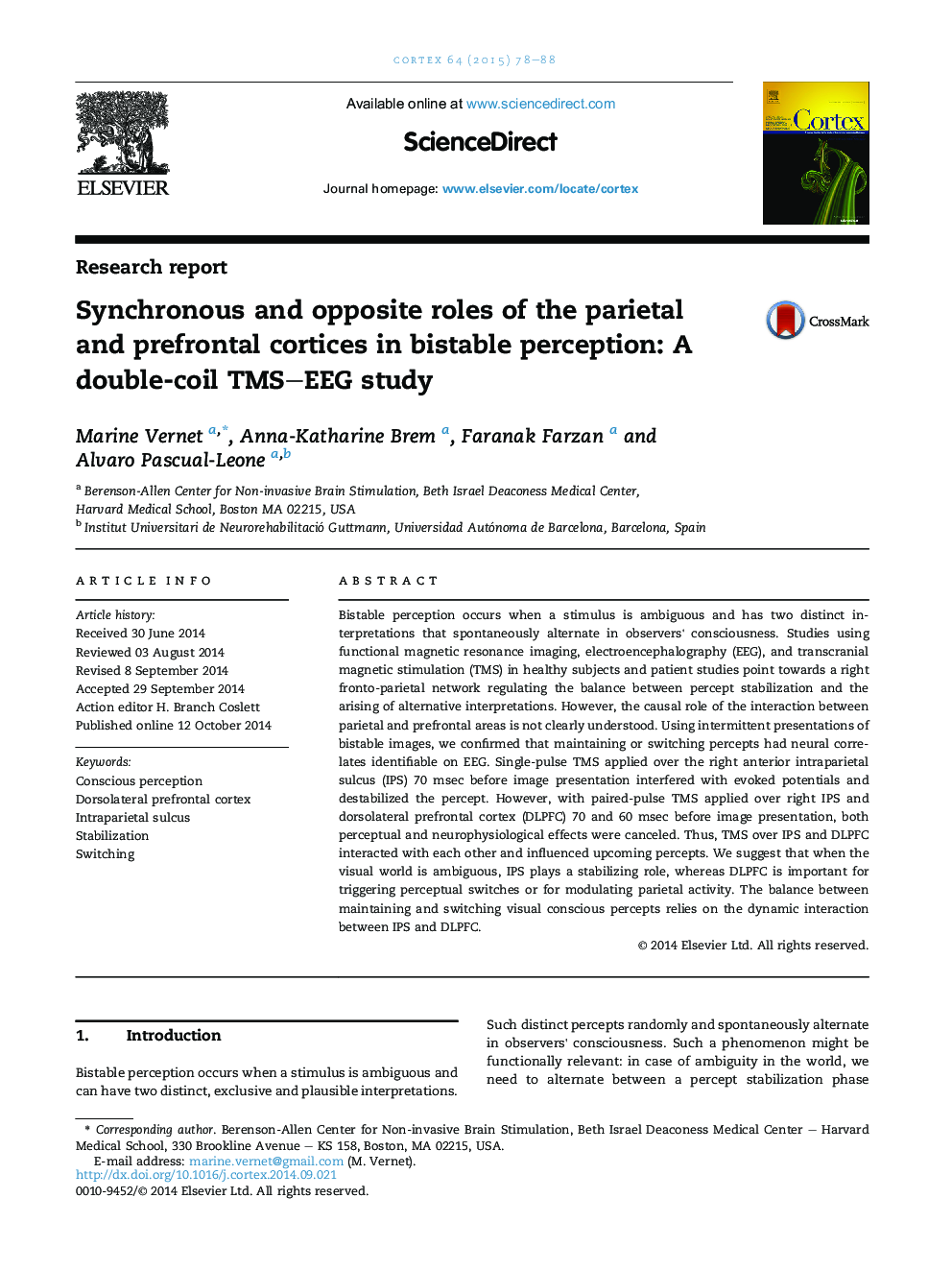| Article ID | Journal | Published Year | Pages | File Type |
|---|---|---|---|---|
| 7314797 | Cortex | 2015 | 11 Pages |
Abstract
Bistable perception occurs when a stimulus is ambiguous and has two distinct interpretations that spontaneously alternate in observers' consciousness. Studies using functional magnetic resonance imaging, electroencephalography (EEG), and transcranial magnetic stimulation (TMS) in healthy subjects and patient studies point towards a right fronto-parietal network regulating the balance between percept stabilization and the arising of alternative interpretations. However, the causal role of the interaction between parietal and prefrontal areas is not clearly understood. Using intermittent presentations of bistable images, we confirmed that maintaining or switching percepts had neural correlates identifiable on EEG. Single-pulse TMS applied over the right anterior intraparietal sulcus (IPS) 70Â msec before image presentation interfered with evoked potentials and destabilized the percept. However, with paired-pulse TMS applied over right IPS and dorsolateral prefrontal cortex (DLPFC) 70 and 60Â msec before image presentation, both perceptual and neurophysiological effects were canceled. Thus, TMS over IPS and DLPFC interacted with each other and influenced upcoming percepts. We suggest that when the visual world is ambiguous, IPS plays a stabilizing role, whereas DLPFC is important for triggering perceptual switches or for modulating parietal activity. The balance between maintaining and switching visual conscious percepts relies on the dynamic interaction between IPS and DLPFC.
Keywords
Related Topics
Life Sciences
Neuroscience
Behavioral Neuroscience
Authors
Marine Vernet, Anna-Katharine Brem, Faranak Farzan, Alvaro Pascual-Leone,
